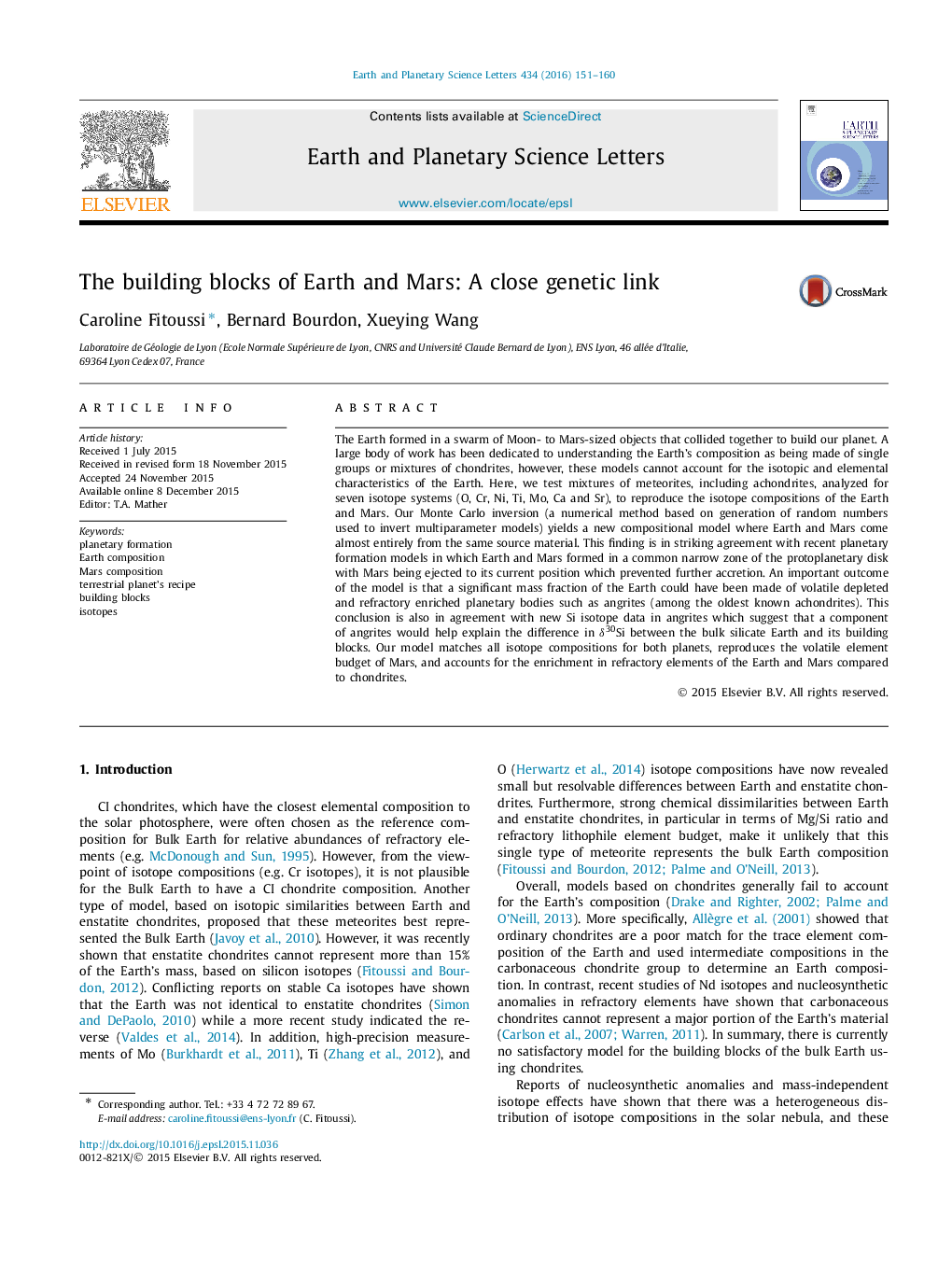| Article ID | Journal | Published Year | Pages | File Type |
|---|---|---|---|---|
| 6427734 | Earth and Planetary Science Letters | 2016 | 10 Pages |
â¢Earth and Mars building blocks are constrained by nucleosynthetic anomalies and Î17O.â¢Angrites turn out to be an important component in terrestrial planets' recipe.â¢Our model (OCCAM) explains the refractory lithophile element enrichment of the Earth.â¢Our model is consistent with the Grand Tack planetary formation model.â¢The OCCAM model accounts for the volatile element depletion in Mars.
The Earth formed in a swarm of Moon- to Mars-sized objects that collided together to build our planet. A large body of work has been dedicated to understanding the Earth's composition as being made of single groups or mixtures of chondrites, however, these models cannot account for the isotopic and elemental characteristics of the Earth. Here, we test mixtures of meteorites, including achondrites, analyzed for seven isotope systems (O, Cr, Ni, Ti, Mo, Ca and Sr), to reproduce the isotope compositions of the Earth and Mars. Our Monte Carlo inversion (a numerical method based on generation of random numbers used to invert multiparameter models) yields a new compositional model where Earth and Mars come almost entirely from the same source material. This finding is in striking agreement with recent planetary formation models in which Earth and Mars formed in a common narrow zone of the protoplanetary disk with Mars being ejected to its current position which prevented further accretion. An important outcome of the model is that a significant mass fraction of the Earth could have been made of volatile depleted and refractory enriched planetary bodies such as angrites (among the oldest known achondrites). This conclusion is also in agreement with new Si isotope data in angrites which suggest that a component of angrites would help explain the difference in δ30Si between the bulk silicate Earth and its building blocks. Our model matches all isotope compositions for both planets, reproduces the volatile element budget of Mars, and accounts for the enrichment in refractory elements of the Earth and Mars compared to chondrites.
